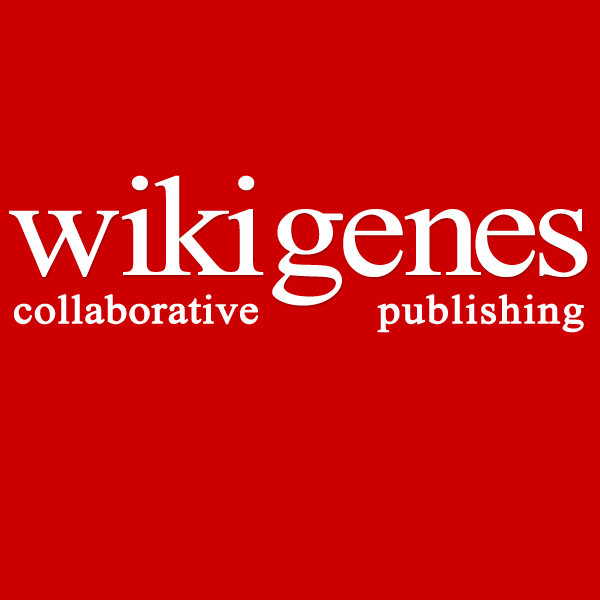Gene Review:
Foxc2 - forkhead box C2
Mus musculus
Synonyms:
BF-3, Brain factor 3, Fkh14, Fkhl14, Forkhead box protein C2, ...
- The forkhead transcription factors, Foxc1 and Foxc2, are required for arterial specification and lymphatic sprouting during vascular development. Seo, S., Fujita, H., Nakano, A., Kang, M., Duarte, A., Kume, T. Dev. Biol. (2006)
- Roles of forkhead transcription factor Foxc2 (MFH-1) and endothelin receptor A in cardiovascular morphogenesis. Kanzaki-Kato, N., Tamakoshi, T., Fu, Y., Chandra, A., Itakura, T., Uezato, T., Tanaka, T., Clouthier, D.E., Sugiyama, T., Yanagisawa, M., Miura, N. Cardiovasc. Res. (2005)
- Insulin and TNF alpha induce expression of the forkhead transcription factor gene Foxc2 in 3T3-L1 adipocytes via PI3K and ERK 1/2-dependent pathways. Grønning, L.M., Cederberg, A., Miura, N., Enerbäck, S., Taskén, K. Mol. Endocrinol. (2002)
- Notochord-dependent expression of MFH1 and PAX1 cooperates to maintain the proliferation of sclerotome cells during the vertebral column development. Furumoto, T.A., Miura, N., Akasaka, T., Mizutani-Koseki, Y., Sudo, H., Fukuda, K., Maekawa, M., Yuasa, S., Fu, Y., Moriya, H., Taniguchi, M., Imai, K., Dahl, E., Balling, R., Pavlova, M., Gossler, A., Koseki, H. Dev. Biol. (1999)
- Defective valves and abnormal mural cell recruitment underlie lymphatic vascular failure in lymphedema distichiasis. Petrova, T.V., Karpanen, T., Norrmén, C., Mellor, R., Tamakoshi, T., Finegold, D., Ferrell, R., Kerjaschki, D., Mortimer, P., Ylä-Herttuala, S., Miura, N., Alitalo, K. Nat. Med. (2004)
- The murine winged helix transcription factors, Foxc1 and Foxc2, are both required for cardiovascular development and somitogenesis. Kume, T., Jiang, H., Topczewska, J.M., Hogan, B.L. Genes Dev. (2001)
- The winged helix transcription factor Foxc1a is essential for somitogenesis in zebrafish. Topczewska, J.M., Topczewski, J., Shostak, A., Kume, T., Solnica-Krezel, L., Hogan, B.L. Genes Dev. (2001)
- The winged helix transcription factor MFH1 is required for proliferation and patterning of paraxial mesoderm in the mouse embryo. Winnier, G.E., Hargett, L., Hogan, B.L. Genes Dev. (1997)
- FOXC2 haploinsufficient mice are a model for human autosomal dominant lymphedema-distichiasis syndrome. Kriederman, B.M., Myloyde, T.L., Witte, M.H., Dagenais, S.L., Witte, C.L., Rennels, M., Bernas, M.J., Lynch, M.T., Erickson, R.P., Caulder, M.S., Miura, N., Jackson, D., Brooks, B.P., Glover, T.W. Hum. Mol. Genet. (2003)
- Roles for the winged helix transcription factors MF1 and MFH1 in cardiovascular development revealed by nonallelic noncomplementation of null alleles. Winnier, G.E., Kume, T., Deng, K., Rogers, R., Bundy, J., Raines, C., Walter, M.A., Hogan, B.L., Conway, S.J. Dev. Biol. (1999)
- Large-scale identification of genes implicated in kidney glomerulus development and function. Takemoto, M., He, L., Norlin, J., Patrakka, J., Xiao, Z., Petrova, T., Bondjers, C., Asp, J., Wallgard, E., Sun, Y., Samuelsson, T., Mostad, P., Lundin, S., Miura, N., Sado, Y., Alitalo, K., Quaggin, S.E., Tryggvason, K., Betsholtz, C. EMBO J. (2006)
- The forkhead genes, Foxc1 and Foxc2, regulate paraxial versus intermediate mesoderm cell fate. Wilm, B., James, R.G., Schultheiss, T.M., Hogan, B.L. Dev. Biol. (2004)
- Bone morphogenetic protein regulation of forkhead/winged helix transcription factor Foxc2 (Mfh1) in a murine mesodermal cell line C1 and in skeletal precursor cells. Nifuji, A., Miura, N., Kato, N., Kellermann, O., Noda, M. J. Bone Miner. Res. (2001)
- LMX1B, a LIM homeodomain class transcription factor, is necessary for normal development of multiple tissues in the anterior segment of the murine eye. Pressman, C.L., Chen, H., Johnson, R.L. Genesis (2000)
- Targeted disruption of the homeobox transcription factor Bapx1 results in lethal skeletal dysplasia with asplenia and gastroduodenal malformation. Akazawa, H., Komuro, I., Sugitani, Y., Yazaki, Y., Nagai, R., Noda, T. Genes Cells (2000)
- Differential expression of multiple fork head related genes during gastrulation and axial pattern formation in the mouse embryo. Sasaki, H., Hogan, B.L. Development (1993)









